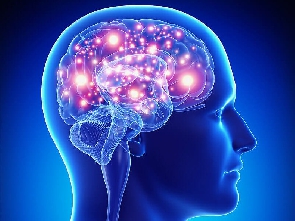Addiction is a major problem in today's world, affecting millions of people worldwide and spanning all socioeconomic levels. Exploring the vast network of the human brain provides a deep understanding of the mechanisms underlying addiction, illuminating its complexities and opening the door to more successful interventions.
Fundamentally, addiction is a chronic, recurrent illness marked by an obsession with drugs, even in the face of negative outcomes. The way that drugs, such as alcohol, nicotine, opioids, and stimulants, hijack the neuronal circuitry of the brain and radically change its structure and function has been elucidated by neuroscientific studies.
Addiction is largely caused by the brain's reward system, which is mostly controlled by neurotransmitters like dopamine. Dopamine is released in critical brain regions by substances or activities that elicit pleasure, initiating a positive feedback loop that intensifies the urge to repeat the event.
The brain's circuitry is rewired through neuroadaptations brought on by repeated exposure to addictive drugs. Substantial alterations occur in regions that are essential for decision-making, impulse control, and reward processing, including the prefrontal cortex, nucleus accumbens, and amygdala. These changes result in impaired self-control and increased desires.
Addiction is fueled by neuroplasticity, the brain's capacity to rearrange itself. It not only intensifies the first feelings of euphoria but also reinforces the brain's link between the substance or activity and pleasure, creating a need that might overcome reason. Susceptibility to addiction is also significantly influenced by genetics.
A person's susceptibility to addiction may be increased by certain genetic traits, which can also affect how the brain reacts to stimuli that are addictive. But environmental elements including stress, trauma, and social pressures also play a big role in raising the likelihood of addiction.
The application of neuroscientific understanding to the study of addiction has transformed therapeutic modalities. Recovering from addiction has the potential to be aided by therapeutic interventions like as pharmaceuticals that reduce cravings and withdrawal symptoms, behavioral therapies that rewire dysfunctional habits, and holistic methods that address psychological and social elements.
Furthermore, improvements in neuroimaging methods have made it possible for researchers to see and comprehend the alterations in the brain linked to addiction, supporting the idea that addiction is a complicated brain illness rather than just a moral failure.
It is critical to eradicate the stigma associated with addiction. Acknowledging addiction as a brain disease having biological, psychological, and environmental roots promotes empathy and a more humane response to those who are struggling with addiction.
Advocating for evidence-based therapies, raising awareness, and supporting legislation that highlights addiction as a public health concern are critical tasks for medical practitioners. Communities that are better informed about the neurology of addiction may provide a more encouraging atmosphere for those who are looking for assistance.
In summary, a deep comprehension of the complex nature of addiction is offered by the neuroscience of addiction. By exposing the brain's role in addiction, we open the door for novel therapies and a cultural shift in favor of a more rational, scientific approach to treating this complicated problem.
Health News of Tuesday, 28 November 2023
Source: Simon Badu, Contributor

















